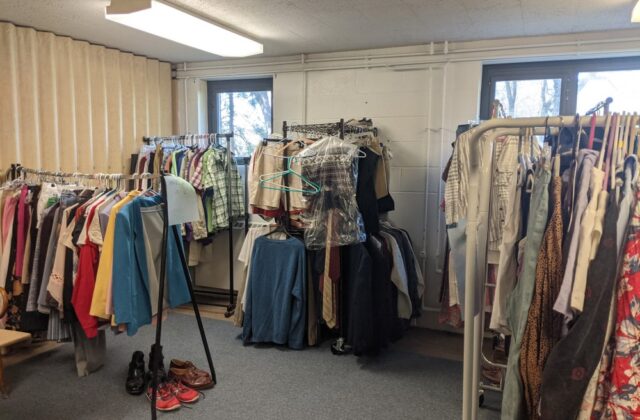Is the Fashion Industry Committing Hydrocide?
Norfolk environmental program highlights the need for sustainable fashion
by Kelly Kandra Huhges
Earth Day may be celebrated every year on April 22, but every day is a great day to consider how personal choice impacts the Earth. A recent joint program of the Norfolk Church of Christ and the Norfolk Library virtually welcomed documentary filmmaker Roger Williams for a question-and-answer (Q&A) session on his award-winning 2016 film, RiverBlue. Attendees learned how what they wear can have lasting negative impacts on this planet.
During the discussion, attendees spoke of some of the alarming statistics cited in RiverBlue. To produce one pair of Levi’s 501 jeans requires almost 920 gallons of water and 400 megajoules of energy and expels 32 kg of carbon dioxide, which is the equivalent of running a garden hose for 106 minutes, powering a computer for 556 hours, and driving for 78 miles. Notably, 3.2 percent of all water available to the human race is used by the textile industry every year. In addition, the Buriganga River in Dhaka, Bangladesh is more chemical than water. Williams explained how the fashion industry chooses to ignore their pollution and waste because it affects their bottom line. By outsourcing to second- and third-party factories in third world countries, fashion companies can separate what they sell from where and how it is made.
One of the more shocking truths learned in the discussion is that one clothing company, Zara, has 26 seasons of clothes each year. Upon further research, that number is now outdated. Zara, in addition to other fast fashion companies such as Forever 21 and H&M, now has 52 micro-seasons with new clothes being delivered to stores on a weekly or daily basis. It’s no surprise to then learn that the volume of clothing Americans throw away each year has doubled in the last 20 years, from 7 million to 14 million tons.
During the Q&A, Williams suggested that better choices by consumers could drive change. The website Good on You (https://directory.goodonyou.eco/) rates thousands of brands on their sustainability, from greenhouse gas emissions and water use to worker safety and living wages. The website evaluates 500-plus data points across more than 100 key issues, indicators, and standards systems to arrive at each brand’s score. Williams also suggested contacting brands you enjoy and asking where and how they source and produce their products. Not only does this provide information to make a more informed choice, but it also lets the brand know that sustainable production is a consideration when purchasing a product.
In addition to the suggestions by Williams, there are a few local opportunities for Norfolk residents to make more sustainable choices when it comes to fashion. Norfolk residents can now recycle textiles directly at the transfer station. Look for two bins next to the trailers for appliances, electronics, and other items. Also, clothes can be dropped off Tuesday through Friday from 10 a.m. to 1 p.m. at the Norfolk Clothes Closet, located in Battell Chapel. People are also encouraged to use the Norfolk Clothes Closet as a source for their own wardrobe, as anyone is welcome to stop by, browse the racks, and leave with some new-to-you articles of clothing. There’s also the Buy Nothing NW Corner Facebook group. This group allows members to post anything they would like to give away, lend, or share, and to ask for anything they would like to receive for free or borrow.
The RiverBlue documentary is available through Kanopy, one of the Norfolk Library’s free eMedia streaming sites. Please visit http://www.norfolklibrary.org/emedia/

